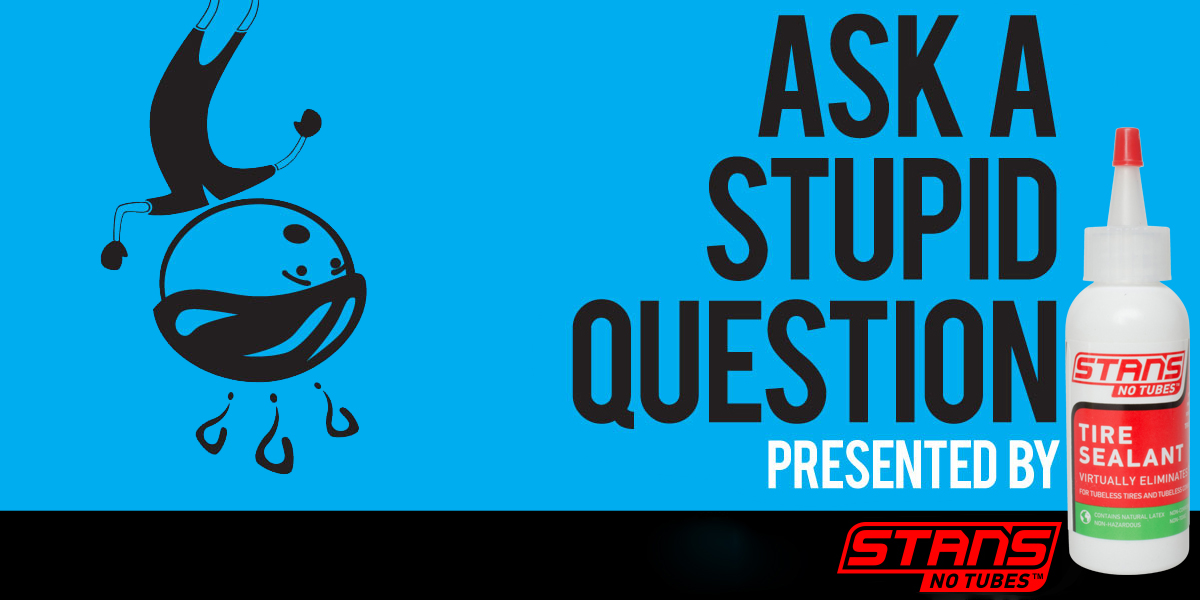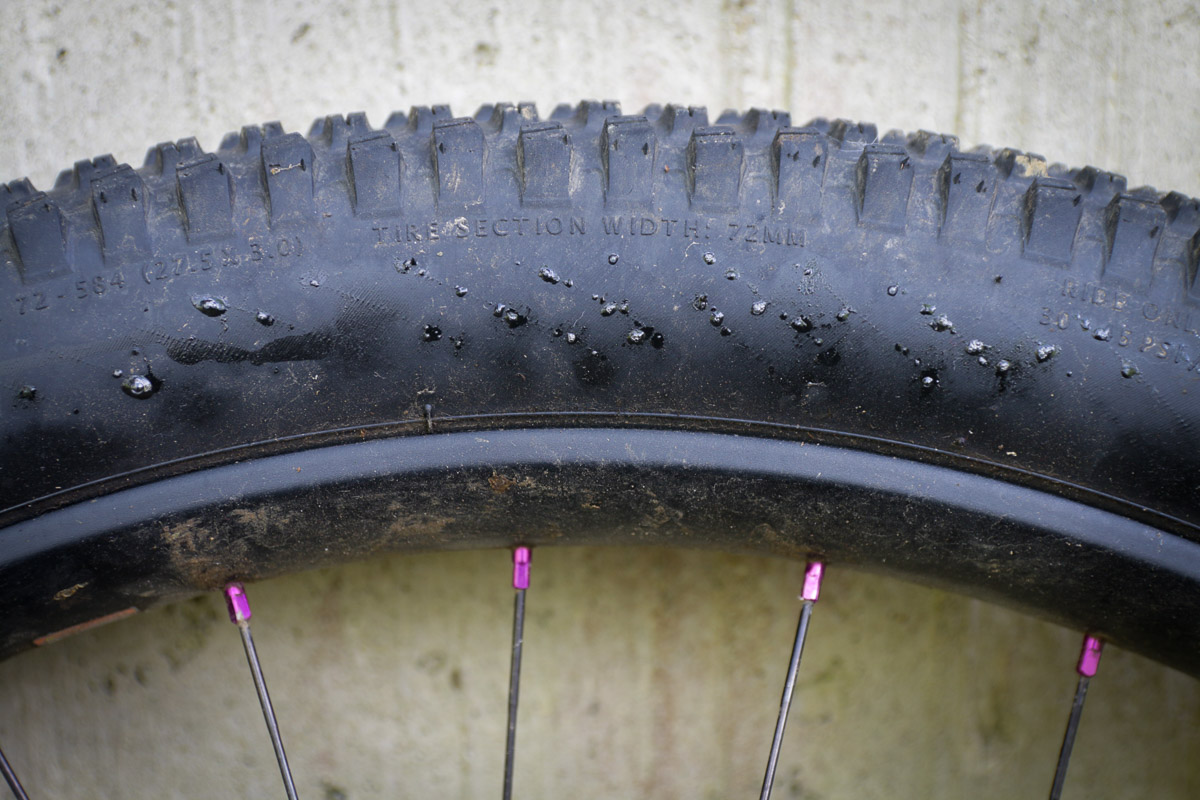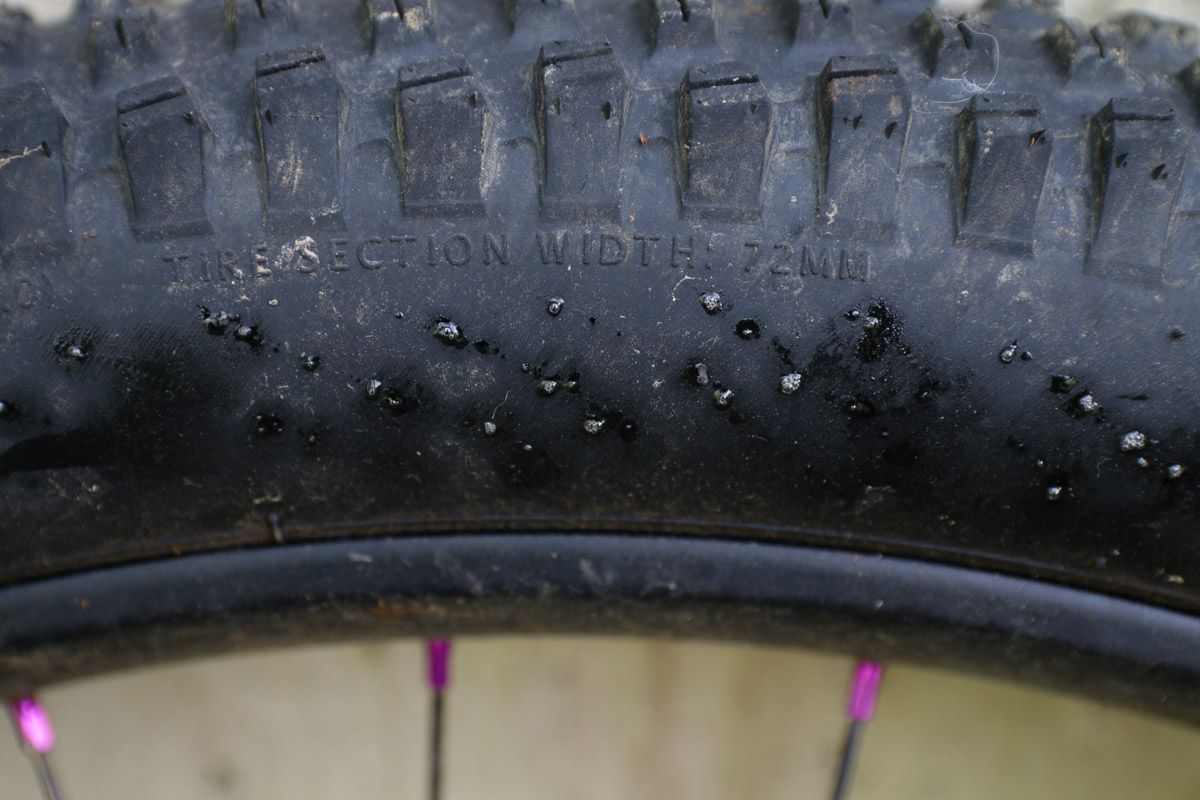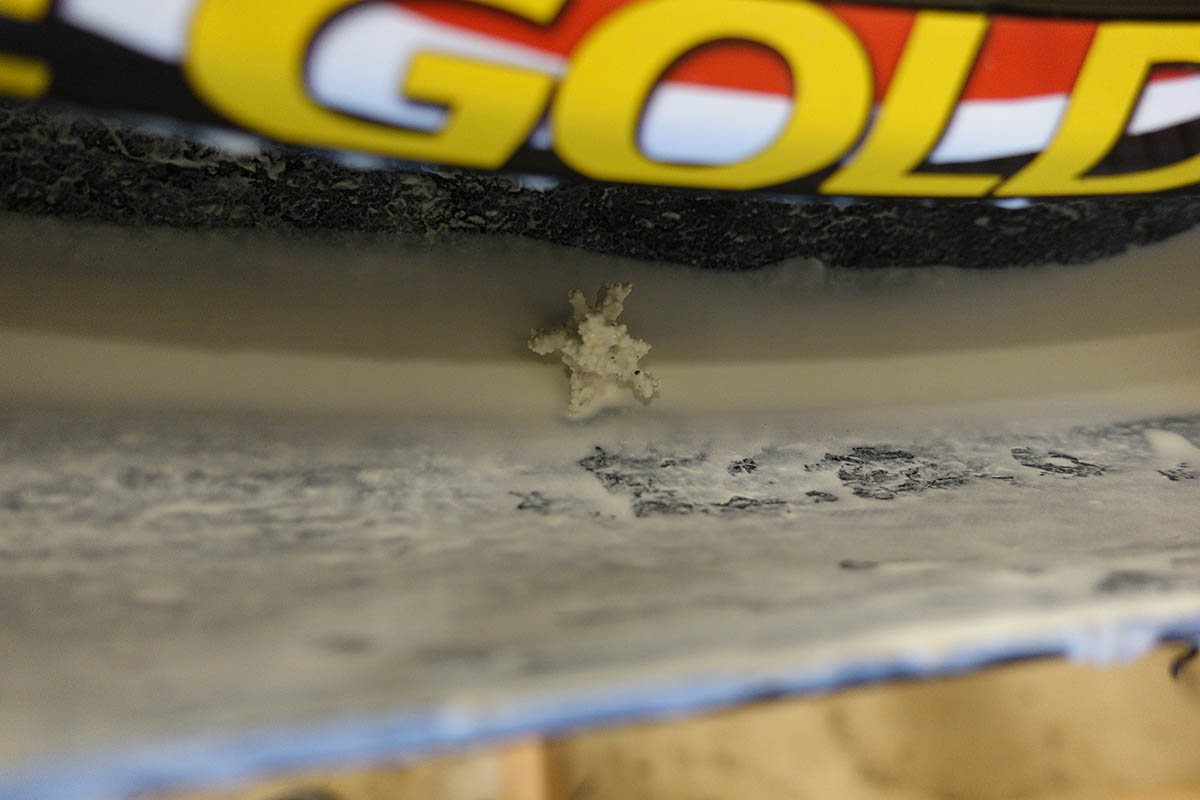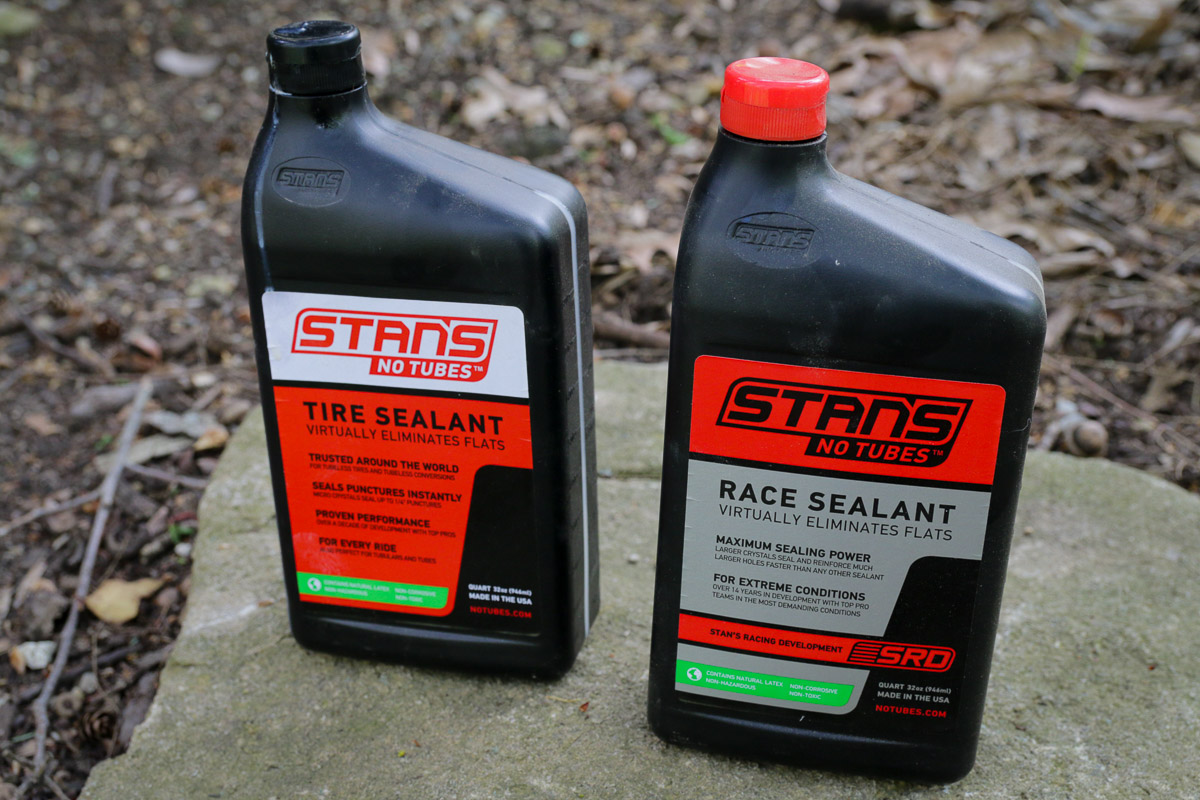We know, there’s no such thing as a stupid question. But there are some questions you might not want to ask your local shop or riding buddies. AASQ is our weekly series where we get to the bottom of your questions – serious or otherwise. Hit the link at the bottom of the post to submit your own question!
If you’ve had a tubeless tire filled with sealant sitting in your garage long enough, you’ve probably seen it. Some mysterious liquid seeping through the sidewall. Is it bad? Do you need to replace your tire? Replace the sealant? Those are all extremely valid questions and ones that we hoped to find the answer to. Now, thanks to insight from Stan’s No Tubes we have the answer to that, and a bunch of other sealant related questions. Still have more questions about tubeless, tires, sealant, or otherwise? Drop us a line with the link below!
Why is there liquid seeping through the sidewalls of my tire after having it sit for awhile, or long after adding the initial sealant? Is it bad? What should I do to avoid/fix it? Does it matter what sealant or tire is used in this case?
Stan’s No Tubes: This starts with the fact that tires, even modern tubeless or tubeless ready, are not perfectly air tight. The liquid you can see seeping through sidewalls or occasionally old puncture sites is generally one or more of the ingredients used as a preservative or “longevity enhancer.” For the majority of sealants currently on the market, that ingredient is often some form of glycol or glycerine (clear liquids, oily in nature) as they typically blend well with natural or synthetic latex and are hygroscopic in nature. As the latex or coagulant begins to dry, the remaining elements continue to find tiny pores or imperfections in the tires that leads to the seeping look.
Basically no, it’s not bad and won’t hurt anything. It’s not a great look we’ll admit, and we are continuously looking at our own formulations as well as those of the competition. In the end we have a few goals – first, sealant has to seal, bottom line, second, we are looking to balance longevity with puncture protection. Sealant that doesn’t have decent longevity and user friendly characteristics is a painful product to work with and if you don’t have good puncture protection, see point 1.
You’ll find, if you haven’t already, that many sealants on the market exhibit some type of seeping just as you’ll find that some tire makers or some types of tire construction are more or less susceptible.
Can I mix sealants together? If not, what’s the best way to clean out a tire before adding a new, different sealant?
Stan’s No Tubes: No, sealants should not be mixed together. You likely won’t relive your elementary school volcano science project, but you will likely degrade the efficacy of the sealant in a big way.
Cleaning tires is easier said than done in most cases. If you wanted to make a go of it then I’d turn the tire inside out, let the current sealant dry over a couple of days then give it a good scrub with soapy water and a stiff bristle (nylon or similar) scrub brush.
Do tires have a certain shelf life once sealant is added? Or can they simply be refilled with sealant until the tread is worn down or the casing is destroyed?
Stan’s No Tubes: No, tires do not have a shelf life from a sealant standpoint. Short of the worn tread or damaged casing mentioned, dry rot might be the only time based constraint but applies whether sealant or tubes are used.
What causes Stan’s boogers or Urchins? Should they be removed from the tire?
Stan’s No Tubes: Oh man, of all the things we’ve brought to tubeless, Stan’s biggest contributions might be the terms “booger” and “burp.” We all have come to understand the meaning but not the most graceful terms to explain tubeless to the masses.
Essentially what happens when the booger, urchin, coral, Stanimal, etc has formed is the sealant has started to dry or some other debris has found its way inside. That first dried bit or piece of leaf or loam that got in the tire basically tumbles around, snowballing, until you’ve created a prize in the Cracker Jack.
Yes, you want to remove the alien from the mix when you spot (or hear) them. We’d also recommend topping off your sealant at that time as some of the latex (in our case) has been consumed in the creation process.
What is the best practice for installing sealant in a brand new tire, and then keeping it maintained in the long run? I.e. how often should you check it, refill it, etc.
Stan’s No Tubes: There are several options for sealant installation. One is to leave the last few inches of the last tire bead open when mounting the tire, then simply pour in the recommended amount by the manufacturer. Some sealants, our standard formula for example, also have the option of being injected with a syringe or small bottle attached to the valve with the valve core removed. Exercise caution here as some sealants, like our Race formula, should not be injected through the valve, with or without the valve core in place as it may clog the valve or strain out important particulates.
Longevity is always a tough question to answer as there are many factors to consider. How permeable is the tire casing? How much sealant was originally installed? What is the storage environment from a heat/humidity standpoint? How often is the bike ridden? There are some wild claims made about sealant longevity from some manufacturers, and the old adage of “if it’s too good to be true…” should definitely be considered.
It’s not just longevity that’s important, but efficacy (see Rollers of Death video above – don’t try this at home!). Just because the sealant may still be wet inside the tire doesn’t mean it can flow to or seal a puncture. For us, if you can hear the sealant sloshing around inside the tire and don’t find drastic pressure loss between uses, then you’re in good shape. Otherwise, it’s time to top off. A good practice is to open a tire bead and take a peek every 8 weeks, but we see our sealant often lasting 3-6 months in average conditions.
When it comes to getting the most out of your tire sealant, are there any tips or tricks that Stan’s would suggest?
Stan’s No Tubes: First and foremost is to give the bottle a good shake prior to installation. Basically you can’t shake it too much. The other is to do the wheel slosh in a quiet area every so often or open the bead for a quick look in the 8-10 week range.
For road tubeless use, the 2oz bottle ensures a perfectly measured mix of liquid sealant to sealing crystals and the little bottle is nearly infinitely refillable for your mountain bike needs.
Got a question of your own? Click here to use the AASQ form, or find the link under the Contact menu header up top anytime a question pops into your mind!
